TAGGED AS: aapi, Film, international, movies

(Photo by Matt Grace & Daryl Ward/©Paladin Films/Courtesy Everett Collection)
As part of AAPI Heritage month, we asked five writers, musicians, and film experts to share the Pacific Islander films they love. Below are their selections and why they mean so much to them, beginning with a reflection from TV writer, journalist, and author Maria Lewis.
“We are the original storytellers,” Taika Waititi said as he closed out his Oscars acceptance speech when he won the Academy Award for Best Adapted Screenplay in 2020 for Jojo Rabbit. Waititi famously – and by his own admission – talks a lot of s–t. Yet of all the s–t he has talked over the past two decades of his career, this was the most important. Why? Because on arguably Hollywood’s night of nights, up there on a global platform, a man of mixed Māori and Jewish heritage reminded everyone that, for “Pacific Islanders” specifically, telling stories is not just something we do, it’s an integral part of who we are, what we are, and where we come from.
It’s currently AAPI – Asian American Pacific Islander – Heritage Month, which is an insanely large acronym to try and group two hugely diverse and complicated ethnicities under, but hey, it’s either this or not being acknowledged you exist… The Pacific Islander term is loaded with a complicated colonial history that is probably best broken down by Kristian Fanene Schmidt in a recent Instagram video. (Kristian’s choices can be found below, too.) For those of you playing at home, essentially it’s meant to refer to every brown person living on any one of the thousands of islands that span from Palau to Easter Island.

(Photo by Anita Narbey)
It’s a lot of geographical space, it’s a lot of different cultures and beliefs and languages and mythologies and history, and it’s a lot of stories to cram under one “Pacific Islander” tag. Which is why the best way to celebrate the many cinematic accomplishments of such a beautiful and broad expanse of people is not to ask one person, but many, to reflect on the movies that mean the most to them – for each to talk to stories they have connected with and have celebrated, informed by their specific lived cultural experience. Which is what we have done here.
As a woman of mixed descent growing up in Australasia, the films that have shaped me, defined me, lured me, are extremely personal and they are not universal, just as “Pacific Islanders” are not universal. They’re films like 2010’s Boy, now one of the lesser-known Waititi joints but a breakthrough at the time for its equal-parts hilarious and heartbreaking portrayal of absentee fathers. They’re films like 1994’s Once Were Warriors, a brutal yet important film not just for the telling of largely untold domestic stories and residual Colonial trauma, but the ripples of opportunity that the film created for talent like Temuera Morrison, a now veteran character actor and vital part of the Star Wars universe, and director Lee Tamahori, the first person of color to direct a film with a budget over $100 million in Bond movie Die Another Day.
They’re films like Whale Rider, which brought the work of one of New Zealand’s great novelists, Witi Ihimaera, to the big screen and gave us a still bafflingly great performance from Keisha Castle-Hughes, who became one of the youngest Academy Award nominees for Best Actress when she was just 13 years old. She remains only the second Polynesian actress to be nominated for an acting Academy Award, following Jocelyne LaGarde in her first and only acting role in 1966’s Hawaii. They’re films like Moana, which put an amalgamation of “Pacific Islander” culture on the world stage and gave a generation of children dolls and merchandise and characters that looked like them. For all its imperfect ambition, a glossy Disney animated feature being translated into language is invaluable for the culture now and in the future.

(Photo by © Magnolia Pictures)
They’re films that have slipped under the radar for many, like Toa Fraser’s heart-racing The Dead Lands, from 2014, which is best described as a Māori Apocalypto and saw its own television adaptation on Shudder just last year. It’s Born To Dance, which in 2015 spotlighted the skill and significance of movement to the culture with the work of Parris Goebel, Tia Maipi, and countless others. It’s even Training Day, maybe weirdly, but for the scene-stealing performance of Cliff Curtis as Hillside Trece gang leader Smiley and what that enabled him to do for the next 20 years as a stealthy Polynesian star in Hollywood and as a producer helping shepherd the next generation of stories like The Dark Horse. It’s the work of Chelsea Winstanely, top to bottom, the first Indigenous woman ever nominated for a Best Picture Academy Award for her work on Jojo Rabbit and her tireless efforts as a storyteller to make sure that those who came before – like Merata Mita – are featured in their own stories, such as the 2018 documentary Merata: How Mum Decolonised the Screen.
It’s the Jemaine Clement of it all, infiltrating Hollywood with Flight Of The Conchords, then crafting a very weird and specific legacy with his skills as a musician, as a producer, and as an entirely unpredictable performer who elevates everything he’s in: whether that’s Legion or Men In Black 3. (I said what I said). It’s the award-winning short films by women and about women, like Purea and Hinekura; it’s the rom-coms like Sione’s Wedding; it’s the documentaries like Poi E: The Story of a Song and Dawn Raid that spotlight the impact of our music.
It’s endless and infinite, which is why it’s crucial to iceberg this: skim the surface and then plunge deeper based on the suggestions and cinema recommended. Because “Pacific Islander” identity is not one thing, as the career of Dwayne Johnson demonstrates. Hollywood has long struggled to understand what to do with us, but The Rock cemented (sorry) a future where one day an Indigenous kid won’t have to be grateful for the slightest crumb of representation (looking at 13-year-old me, getting pumped over Skinny Pete in The Italian Job remake). They can be a global wrestling superstar, they can be a businessman and a business, man, they can be the franchise savior, they can be the biggest star on the planet, and they can do it all while being proudly one of the “original storytellers.”—Maria Lewis is a best-selling author, screenwriter and film curator
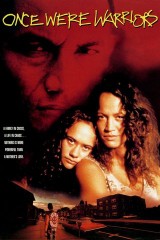
Once Were Warriors (1994)
![]() 93%
93%
Undoubtedly one of the most important New Zealand films of all time. Once Were Warriors – based on the best-selling novel of the same name by Alan Duff, with a powerful screenplay from Riwia Brown – became such a cultural touchstone that it made international stars out of its central cast (trio of Rena Owen, Temuera Morrison, and Cliff Curtis) and catapulted Lee Tamahori into becoming one of Hollywood’s most sought-after directors. It’s a challenging film to revisit in basically every sense given its brutal portrayal of domestic violence, poverty, sexual assault, suicide, and alcoholism for an urban Māori family. That’s not to say any of these things are untrue, yet such was Once Were Warriors‘ impact, they almost become over-represented and stereotyped on screen in the decade following. An unflinching and uncompromising look at the continued impact Colonialism has on Indigenous peoples globally.—Maria Lewis

Samoan Wedding (2006)
![]() 83%
83%
To me, Pacific Islanders have an innate sense of comedy – they never take themselves too seriously and are always up for a laugh. Which is why Sione’s Wedding is so special to me, because it’s the first movie I saw where the story and characters revolved around Polynesians being funny. The premise of the film is simple and of its early 2000s time period: four largely immature friends are banned from their best friend’s wedding unless they can find girlfriends. It’s the Samoan Wedding Crashers meets The Hangover. What could go wrong?–Tali Aualiitia
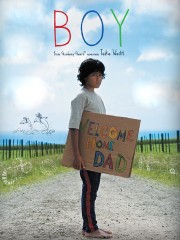
Boy (2010)
![]() 88%
88%
It always upsets me when someone tells me they’re a Taika Waititi fan, but haven’t seen Boy: It is the best Waititi movie and it’s a hill I will die on. Set in the 1980s, Boy centers on an 11-year-old Michael Jackson fan desperately seeking the approval of his criminal father, who re-enters his life to collect a stash of money he hid before going to jail. Of course it’s funny, but there are also moments of incredible innocence and vulnerability that make this well-rounded movie both a joy and a heartbreak to watch. Come for the laughs, stay for the Māorified version of Michael Jackson’s “Thriller” dance complete with haka and poi.–Tali Aualiitia
Moana (2016)
![]() 95%
95%
I would be remiss not to talk about Disney’s Moana. Set in Ancient Polynesia, the movie tells the story of Moana, who must enlist the help of demigod Maui to lift the curse on her island by navigating the oceans and restoring the heart of Te Fiti. Yes, it’s inclusive Disney. Yes, it’s got a powerful strong independent female lead. But for me, it’s the music. Disney enlisted music group Te Vaka’s Opetaia Foa’i to be the voice of the Pacific, and listening to Foa’i open “We Know the Way” in Samoan instantly made it feel new and exciting, but also home and familiar. Also, the movie serves as a constant reminder that my ancestors navigated the oceans using the stars while I can barely get Google Maps to work.–Tali Aualiitia
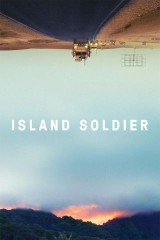
Island Soldier (2017)
![]() - -
- -
In being given the task to help create a “Guide to Films from the Pacific Islands,” I wanted to be very intentional in amplifying lesser known voices and issues. While Island Soldier wasn’t directed by a Pacific Islander, it is an important documentary that gives viewers a reliable insight into the exploitative and destructive nature of US militarism in the Pacific, specifically Kosrae in the Federated States of Micronesia. It’s becoming more and more common for this type of content to be what tips the scales in changing policy, so I encourage audiences to take the time and educate themselves by watching stories like this one and Anote’s Ark, on climate change in Kiribati, as well as Out Of State, on addiction and incarceration in Hawai’i, all of which share colonization and capitalism as the root of our problems. These are just some of our realities that don’t get the attention and certainly not the reparation they deserve.–Kristian Fanene Schmidt
Released in 2019, Vai is a beautiful collection of eight shorts spanning the Pacific, tied together by a common thread of mana wahine. What I love most about this film is that in addition to being directed by nine Pacific women, we get to see dark-skinned grandmas, mothers, daughters, and sisters in such fullness and beauty, thanks to Solomon Islands filmmaker Matasila Freshwater and Fijian filmmakers the Whippy Sisters, respectively. Due to colorism that permeates every nation, Melanesians often get erased and excluded from Pacific discourse, so I’m looking forward to seeing more content like this and the Vanuatu love story Tanna! Vai is actually a follow-up to another great movie showcasing eight Māori women directors, Waru. Be sure to watch them together, and keep an eye out for a third installment with a focus on our Aboriginal whānau coming soon.–Kristian Fanene Schmidt
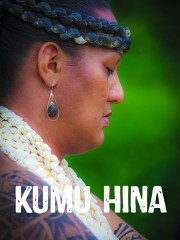
Kumu Hina (2014)
![]() - -
- -
Kumu Hina follows the life of Hinaleimoana Wong-Kalu, a Native Hawaiian activist and teacher (and also the Haku Mo’olelo and narrator of this documentary). As a queer Samoan, I would be remiss not to include a narrative that speaks to the diversity in gender expression and sexuality in the Pacific that has long been demonized and outlawed because of the church and colonization. Hina is māhū, and while some māhū may identify as trans or nonbinary, I’m going to resist labeling her as such because not all do. (The trouble with using Western terms to describe Indigenous peoples is that they do not necessarily relate to them nor are they neat translations.) Navigating a world she seldom finds acceptance in, Hina is steeped firmly in her role as a cultural and spiritual leader, fighting for her people while holding true to who she is. We’re now starting to see a rise of queer Pacific content, as evidenced by another documentary made by the same creators, Leitis in Waiting, along with the animated short Kapaemahu, in which Hina serves as both a directer and producer. Hopefully there’ll be more to come.–Kristian Fanene Schmidt
Patu! (1983)
![]() - -
- -
This year marks the 40th anniversary of the South African Springboks 1981 Rugby Tour of New Zealand – a tour met by huge anti-Apartheid protests in NZ – and it’s time to remember this watershed of mass civil disobedience. It’s also timely to remember and honor the Māori woman, single mum, self-taught filmmaker, activist and teacher, and global Indigenous film icon, Merata Mita, and how she captured on film one of the most essential documents of civil unrest in cinema history. Māori cinema exists because of her. PATU! reminds me as a Polynesian Māori woman just what Merata sacrificed and how she and a handful of creatives bravely ushered in a new age of Māori nationalism using celluloid to tell our stories. Manaaka me te Honore.–Sonja Hammer
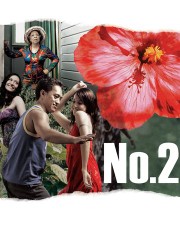
No. 2 (2006)
![]() 58%
58%
This is Toa Fraser’s cinematic love letter to his Fijian matriarchal culture, another part of Pasifika that is rarely represented in cinema. The film is set in the largest Polynesian city on the planet, Auckland, aka Tamaki Makaurau, “The Place of Many Lovers.” Twenty years ago, every language from Te Moana-A-Kiwa (Māori for the Pacific Ocean) could be heard in its inner-city suburbs, like Ponsonby, Grey Lynn, Freemans Bay, and Toa’s own Mount Roskill – where the filmmaker grew up and the film is set – with Tongans, Samoans, Tokelauans, Niuean, Kuki Airani, and Fijian voices. These groups, once labelled as “overstayers” and FOBs ( “Fresh off the Boats” ), today are the blended cultures of post colonial Aotearoa. Toa’s on-screen neighborhood re-imagines those Islander communities I remember where beautiful elder matriarchs like Nanna Maria – the matriarch of the Fijian family in the film – sustained them with bounties of kai and plenty of aroha.–Sonja Hammer

The Orator (2011)
![]() - -
- -
This legendary film made by a Samoan, spoken in Samoan, explores the Fa’a Samoa way of life. Director Tusi Tamasese’s debut is the tale of a taro farmer, Saili, a little person who exists along with his banished wife Vaaiga and daughter as outsiders, ridiculed and stalked by nearby villagers. A showdown between the chiefly hierarchy of the village and Saili comes in the form of an oratory face off. The movie’s lingering pace and profound depth of emotion – along with its authentic sense of “Island Time” – signaled that a new age had arrived in Pasifika cinema: stories about us, told through our ways of seeing.–Sonja Hammer
Tongan Ninja (2002)
![]() - -
- -
Okay, disclaimer: my heritage is Tongan. So, you know, there is an obvious bias here. But any movie with “Tonga” or “Tongan” in the title? I’m there watching it and supporting it from the jump. Sure, this New Zealand-made movie may not be up there with cinematic greats like Whale Rider or Boy, but its low-budget charm and slapstick comedy does give you a hearty chuckle. Oh, and speaking of Boy, see if you can spot a super-young Taika Waititi playing a cook in the kitchen scene.–Hau Latukefu

The Legend of Baron To'a (2020)
![]() 100%
100%
Another disclaimer: the actor in the lead role, Uli Latukefu, is my little brother. Regardless, this is a gem of a movie. Also filmed in New Zealand, The Legend of Baron To’a is a story of love, loyalty, and legacy, following the story of a man who must recover his father’s championship wrestling belt after it is stolen. The humor is on point, so too the emotional beats, which is important because those dual elements are what make up your your average Pacific Islander. Laughing one minute, crying the next.–Hau Latukefu
For My Father's Kingdom (2019)
![]() - -
- -
A genuine heartstring-puller. If you’re like myself, a child born outside of the islands and whose father still has a strong connection and responsibility to the homeland, then you will relate to this. As a matter of fact, you don’t have to be from the islands to feel this one: the message is universal and specific at the same time. At its core, My Father’s Kingdom explores the culture clashes that generations experience when growing up between two different worlds. Misunderstanding and miscommunication can strain relationships, and the film makes you feel that sense of frustration and hurt when watching the families go through it. Yet in the end, like all family stories, there’s still a lot of love.–Hau Latukefu
Meet the Contributors:
Maria Lewis is an author, journalist, screenwriter, and film curator based in Australia. She is the author of seven novels, all part of the Supernatural Sisters series, and a film curator at Australia’s national museum of screen culture.
Sonja Hammer is a diaspora First Nations (Ngati Kahungunu, Kuki Airani-Aitutaki ) woman originally from Aotearoa/NZ, identifying as Takataapui and is Takiwatanga (Autism spectrum). A broadcaster, festival programmer, and advocate, she is the co-founder of the first Australian LGBTQIA+ pop culture organization Queer Geeks of Oz and Secretary and Creative Arts Ambassador for not-for-profit Pasifika organization Pacifique X.
Tahlea Aualiitia is a journalist with the Australian Broadcasting Corporation (ABC). She is currently working on the Pacific Beat program as a presenter, producer, and reporter. Tahlea is very proud of her Samoan/Italian heritage.
Kristian Fanene Schmidt was born and raised in Porirua, Aotearoa/New Zealand while both his parents hail from Samoa. He has an academic background in Pacific Studies, Law, and Education, and was a VJ with MTV Australia before relocating to Los Angeles where he now writes for various publications including The Root, Color Bloq, and for the Sundance Institute.
Hau Latukefu – also known as MC Hau – is a hip hop artist, best known for his work in the group Koolism, and an MC and radio presenter who currently hosts the Hip Hop Show on Australian station Triple J.
Thumbnail image: Anita Narbey, Paladin Films, Magnolia Pictures